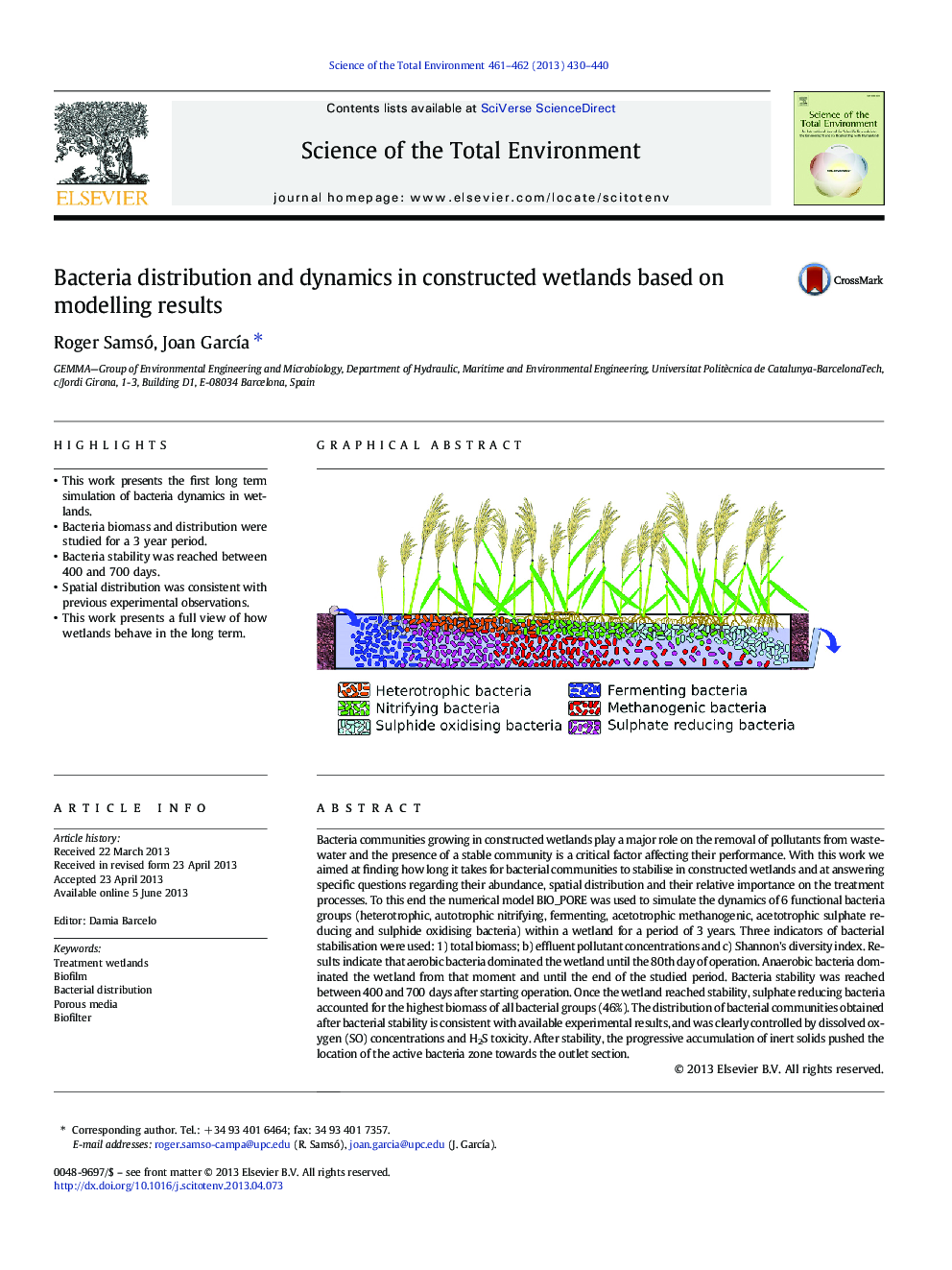| کد مقاله | کد نشریه | سال انتشار | مقاله انگلیسی | نسخه تمام متن |
|---|---|---|---|---|
| 6331971 | 1619799 | 2013 | 11 صفحه PDF | دانلود رایگان |
- This work presents the first long term simulation of bacteria dynamics in wetlands.
- Bacteria biomass and distribution were studied for a 3Â year period.
- Bacteria stability was reached between 400 and 700Â days.
- Spatial distribution was consistent with previous experimental observations.
- This work presents a full view of how wetlands behave in the long term.
Bacteria communities growing in constructed wetlands play a major role on the removal of pollutants from wastewater and the presence of a stable community is a critical factor affecting their performance. With this work we aimed at finding how long it takes for bacterial communities to stabilise in constructed wetlands and at answering specific questions regarding their abundance, spatial distribution and their relative importance on the treatment processes. To this end the numerical model BIO_PORE was used to simulate the dynamics of 6 functional bacteria groups (heterotrophic, autotrophic nitrifying, fermenting, acetotrophic methanogenic, acetotrophic sulphate reducing and sulphide oxidising bacteria) within a wetland for a period of 3Â years. Three indicators of bacterial stabilisation were used: 1) total biomass; b) effluent pollutant concentrations and c) Shannon's diversity index. Results indicate that aerobic bacteria dominated the wetland until the 80th day of operation. Anaerobic bacteria dominated the wetland from that moment and until the end of the studied period. Bacteria stability was reached between 400 and 700Â days after starting operation. Once the wetland reached stability, sulphate reducing bacteria accounted for the highest biomass of all bacterial groups (46%). The distribution of bacterial communities obtained after bacterial stability is consistent with available experimental results, and was clearly controlled by dissolved oxygen (SO) concentrations and H2S toxicity. After stability, the progressive accumulation of inert solids pushed the location of the active bacteria zone towards the outlet section.
Journal: Science of The Total Environment - Volumes 461â462, 1 September 2013, Pages 430-440
